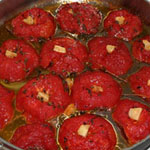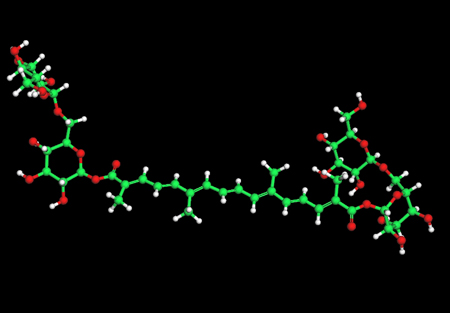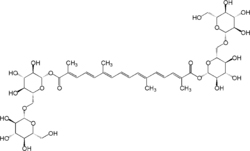Crocin is a natural
carotenoid chemical compound that is found in
the flowers crocus and gardenia. It is the diester
formed from the disaccharide gentiobiose and the
dicarboxylic acid crocetin. It has a deep red
color and forms crystals with a melting point
of 186 °C. When dissolved in water, it forms
an orange solution.
Crocin is the chemical ingredient primarily
responsible for the color of saffron.



